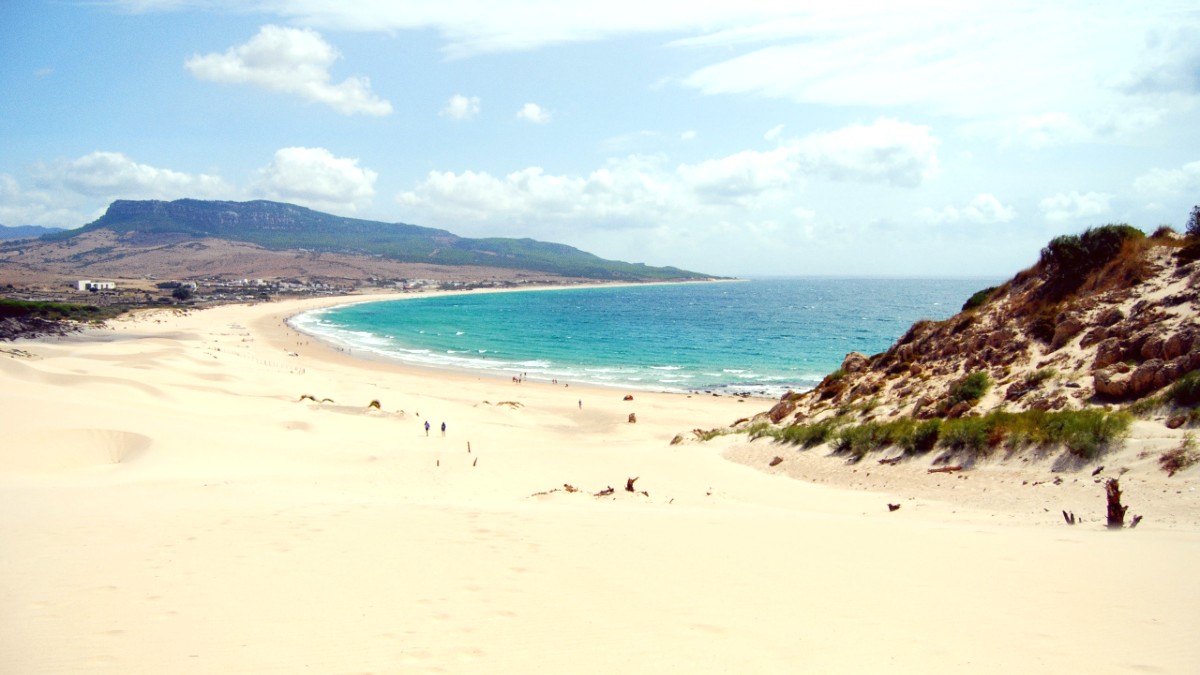
Spain
Andalusian cuisine draws from fresh, local ingredients. Seafood, Iberian pork, and olive oil are central. Moorish and Roman influences are present in many dishes. Tapas culture is a significant part of social dining.
Sherry wine from Jerez defines the region's beverage culture.
Cadiz, Tarifa, and Conil focus on fresh seafood, especially 'almadraba' tuna.
Famous for sherry wine and dishes cooked with sherry, reflecting its winemaking heritage.
Cuisine here highlights game meats, Iberian pork, and hearty traditional stews.
Tuna caught using traditional 'almadraba' traps. Prepared in various ways: tartar, grilled, cured ('mojama'), or in stews.
Find it prominently in Barbate, Zahara de los Atunes, and Conil.
Thin, crispy fritters made with tiny whole shrimp, flour, and herbs.
A specialty of Cadiz, widely available in local bars.
A platter of various small, lightly battered and fried fish, like anchovies, squid, and dogfish.
Found in most coastal towns, perfect for sharing.
Fried dough pastries, typically enjoyed for breakfast or an afternoon snack, dipped in thick hot chocolate.
Fried pastries glazed with honey, common during holidays. Other iconic desserts include Tocino de Cielo and Turrón.
Restaurants in Cadiz, Jerez, and Zahara de los Atunes feature modern interpretations of traditional Andalusian cuisine. Reservations are advisable.
These establishments are plentiful, offering quality meals at reasonable prices, including a la carte menus and "Menú del Día."
Affordable options for casual meals, central to the local dining scene.
Increasingly available in larger cities and tourist towns like Tarifa and Cadiz. Many traditional vegetable dishes (gazpacho, salmorejo) can be adapted.
Look for "vegetariano" or "vegano" clearly marked.
Awareness of "sin gluten" options is growing. Inform staff clearly about allergies. Cross-contamination is a possibility in smaller kitchens.
Consider carrying a translation card for severe allergies.
Learn to make tapas or paella.
Tour olive oil mills or ham producers.
Experience Ruta del Atún or Sherry Harvest.
Casual beach bars with fresh seafood.
Sliced, seasoned pork belly, slow-cooked until tender. A specialty of Chiclana de la Frontera.
Often served cold as a tapa.
Marinated dogfish ('cazón') or other fish, deep-fried in batter.
A popular fried fish tapa throughout the region.
Traditional sherry taverns. Sherry by the glass directly from the barrel, often with authentic flamenco performances and simple tapas.
This market offers fresh seafood, produce, and a popular "Gastronomic Corner" with various food stalls serving prepared tapas.
Many coastal towns (Conil, Barbate, Zahara) host annual gastronomic events celebrating bluefin tuna.
This festival in Jerez celebrates the grape harvest with various events and tastings.
Explore daily and weekly markets for fresh local produce, cheeses, and charcuterie.
Use HappyCow for a growing list of vegetarian and vegan-friendly establishments in larger towns.
Look for specific menu sections.
Always communicate dietary restrictions clearly. Many places are becoming more accustomed to requests for gluten-free or dairy-free options.
Consider carrying a written note in Spanish.
Tipping is not obligatory and typically modest. A small amount (5-10%) for good service is common, or rounding up the bill.
For popular fine dining or on weekend evenings, booking a table is highly advisable to ensure a spot.
Most restaurants accept card payments. Smaller tapas bars may prefer cash for small amounts. Carry some cash for convenience.
Embrace the late dining culture. Spaniards typically eat later than many other nationalities.